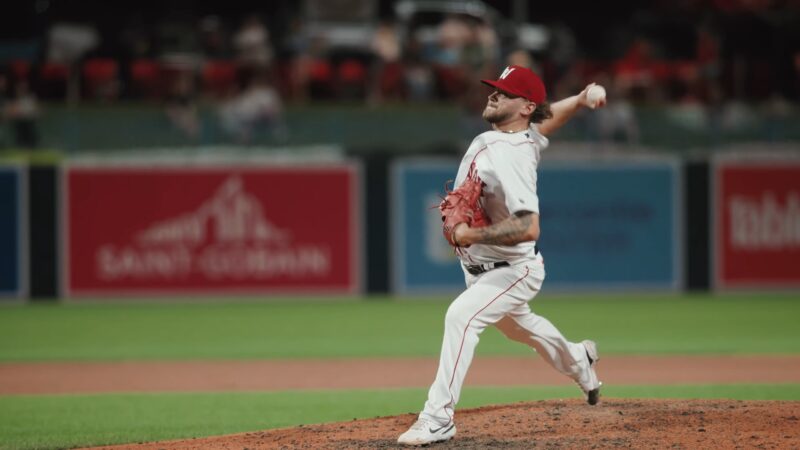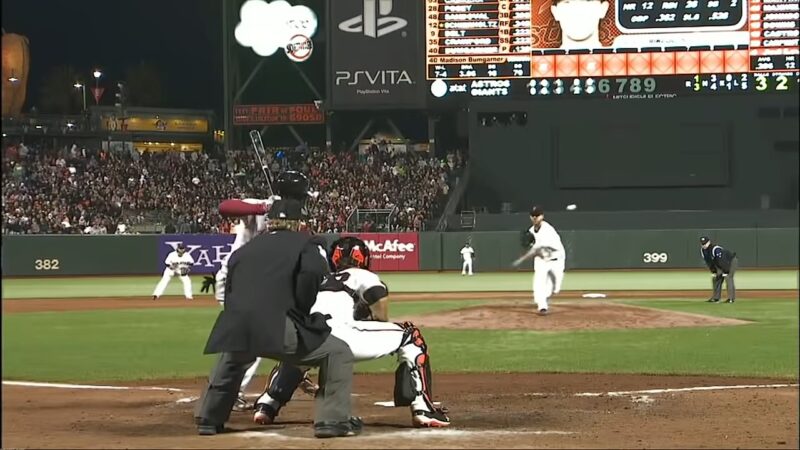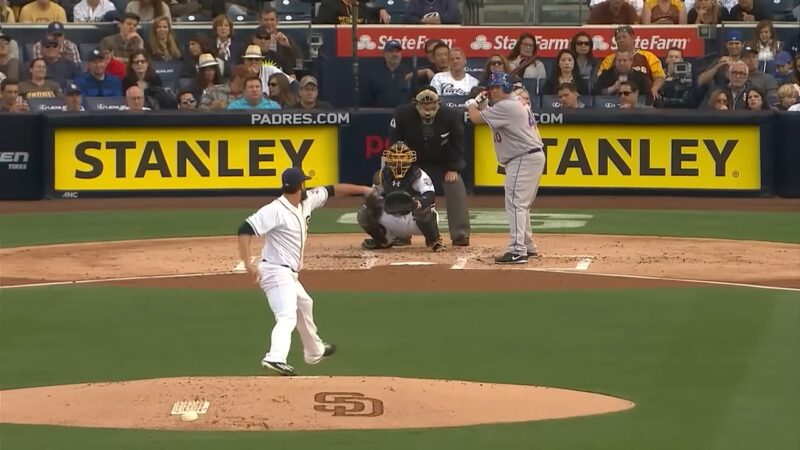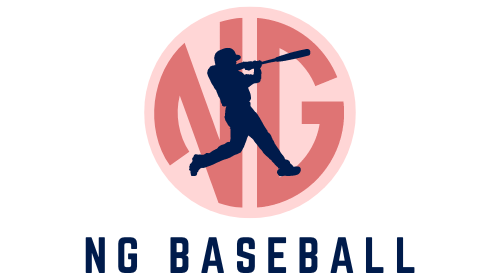Baseball is a sport rich in history and complexity, known for its ability to produce moments that turn players into legends.
Among the most prestigious achievements a pitcher can attain are the no-hitter and the perfect game.
While both are rare and celebrated events, they differ significantly in their requirements and frequency.
Key Highlights
- A no-hitter allows opposing players to reach base via non-hit methods, whereas a perfect game requires no opposing player to reach base at all.
- Perfect games are extremely rare, with only 24 occurring in MLB history, demonstrating a higher level of difficulty compared to no-hitters.
- Both achievements require skill, precision, and a bit of luck, but a perfect game also demands flawless defense and no mistakes.
- Celebrations of no-hitters and perfect games are significant, reflecting the achievements’ rarity and their impact on a pitcher’s legacy.
- Despite the differences, both no-hitters and perfect games are prestigious pitching achievements that are celebrated and remembered by fans and players alike.
What is a No-Hitter?

A no-hitter is a pitching achievement where a team prevents the opposing team from getting any hits during a minimum of nine innings.
It is almost as exciting as having the fastest pitch.
However, players from the opposing team can still reach base through other means, such as walks, errors, or being hit by a pitch.
The defining characteristic of a no-hitter is that the opposing team fails to record a single hit throughout the game.
Key Points
- Opposing players can reach base without getting a hit.
- A game can still be a no-hitter even if the opposing team scores runs, albeit rarely.
- No-hitters can be achieved by a single pitcher or a group of pitchers working together.
No-hitters are more common than perfect games but still a remarkable feat.
In MLB history, there have been 322 no-hitters, showcasing the skill and sometimes a bit of luck involved in achieving this milestone.
What Makes a Perfect Game?
A perfect game is a step above a no-hitter and is one of the rarest feats in baseball. It occurs when not a single player from the opposing team reaches base for the entire game.
This means the pitcher (or pitchers) must not allow any hits, walks, errors, or any other means for a player to get on base.
Essentially, a perfect game is a no-hitter, a shutout, and a win—all rolled into one.
Key Points
- No opposing player is allowed to reach base in any way.
- The game must be won in a minimum of nine innings.
- It is both a no-hitter and a shutout.
With only 24 single-pitcher perfect games in the history of MLB, the rarity of this achievement cannot be overstated.
Domingo Germán of the New York Yankees etched his name into history books as the latest pitcher to achieve a perfect game on June 28, 2023.
How Do They Differ?
While both a no-hitter and a perfect game are monumental pitching achievements, the perfect game demands absolute perfection. Here’s a simple breakdown:
- No-Hitter: Allows for players to reach base through walks, errors, or other non-hit methods.
- Perfect Game: Requires that no opposing player reaches base at all, combining the criteria of a no-hitter and a shutout.
Why Are Perfect Games Rarer?

The stringent requirements of a perfect game make it an exceedingly rare occurrence.
Every player must be retired in order, without any mistakes on defense, and without the pitcher allowing any walks or hitting a batter.
This level of perfection, sustained over at least nine innings, is what makes perfect games a pinnacle of pitching achievement.
Memorable Moments in History
The most recent perfect game was thrown by Domingo Germán, joining a prestigious club of pitchers who’ve achieved perfection.
On the other hand, the latest no-hitter was achieved by Michael Lorenzen.
What Does It Take to Achieve These Feats?
Achieving either a no-hitter or a perfect game requires more than just skill. It demands focus, teamwork, and a bit of luck.
Pitchers must have impeccable control, the defense must be flawless, and circumstances must align.
- Skill and Precision: The pitcher must execute pitches perfectly to prevent hits.
- Defensive Support: Teammates play a crucial role in converting batted balls into outs.
- Mental Fortitude: The pressure of achieving a no-hitter or perfect game grows with each inning.
Why Do Fans and Players Cherish These Moments?
Both achievements are milestones that represent the pinnacle of pitching and team defense.
They are moments where the game transcends the ordinary, creating stories that are told for generations.
For fans and players alike, these achievements symbolize the magic of baseball—a game where on any given day, history can be made.
How Do Teams Celebrate These Achievements?
The celebration of a no-hitter or a perfect game is a spectacle in itself. Players and coaches often rush the field, embracing the pitcher who sealed their name in the annals of baseball lore.
It’s a moment of collective achievement, shared not just among teammates but with fans who understand the magnitude of what they’ve witnessed.
- Team Unity: These moments bring teams closer, as they share in the success of their teammate.
- Fan Appreciation: Fans often give standing ovations, acknowledging the skill and effort required to achieve such a feat.
The Impact on a Pitcher’s Legacy

For pitchers, throwing a no-hitter or a perfect game can define their career. It’s an achievement that sets them apart, a testament to their skill and mental toughness.
While not all Hall of Fame pitchers have thrown a no-hitter or perfect game, having one (or more) on their resume adds a notable highlight to their legacy.
- Hall of Fame Considerations: While not a guarantee for Hall of Fame induction, these achievements contribute to a player’s case.
- Personal Milestone: For many pitchers, these achievements are personal milestones that stand out in their career.
The Role of Luck
While skill and preparation are paramount, luck also plays a role in achieving a no-hitter or perfect game.
A perfectly placed glove, a wind-shifted fly ball, or a close call can be the difference between making history and coming up just short.
FAQs
Can a pitcher still lose a game after throwing a no-hitter?
Yes, a pitcher can lose a game after throwing a no-hitter if the opposing team scores runs through errors, walks, or other non-hit circumstances.
Has anyone ever thrown a perfect game in the World Series?
No, there has never been a perfect game thrown in the World Series.
Can a game be considered a no-hitter if it’s shorter than nine innings?
No, for a game to be officially recognized as a no-hitter by MLB, it must be at least nine innings long.
Do combined no-hitters count the same as individual no-hitters in records?
Yes, combined no-hitters are recognized and counted in MLB records just like individual no-hitters.
Is a perfect game more valuable to a pitcher’s career than a no-hitter?
While both are significant achievements, a perfect game is often viewed as a higher honor due to its rarity and the perfection required.
Has any pitcher thrown more than one perfect game in their career?
No pitcher has ever thrown more than one perfect game in their MLB career.
Final Words
The distinction between a no-hitter and a perfect game lies in the absolute perfection required for the latter.
Both are rare, celebrated achievements that showcase the best of what baseball has to offer: skill, drama, and the pursuit of perfection.
Whether you’re a seasoned fan or new to the sport, understanding the difference between these two accomplishments can deepen your appreciation for the game and its storied history.







